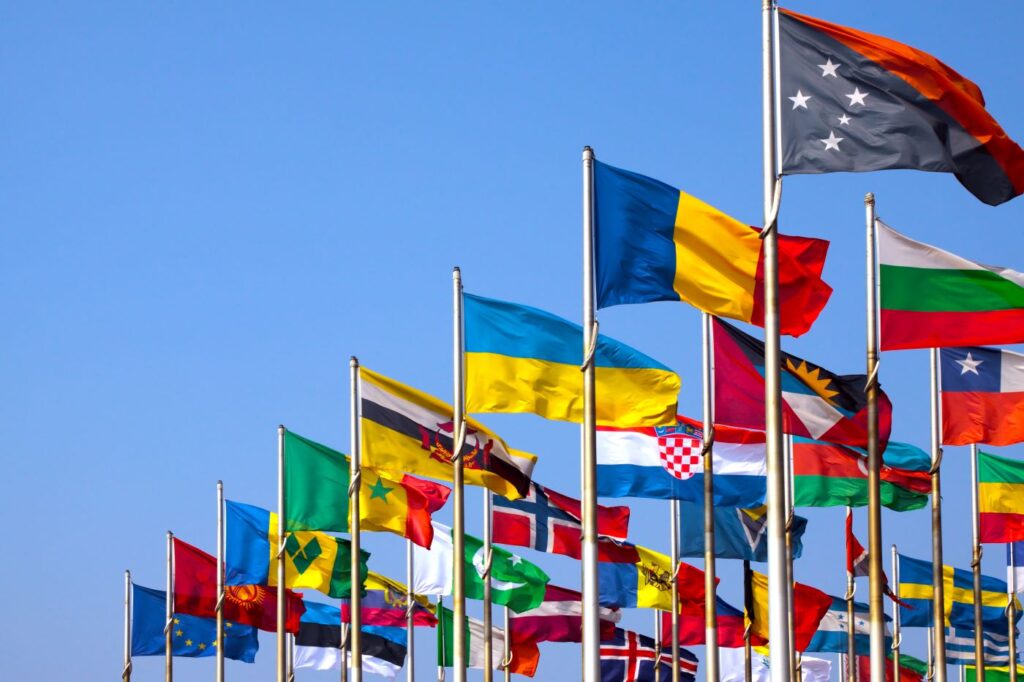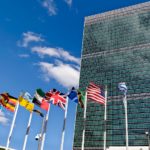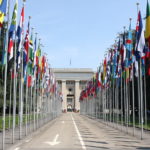According to one of the more infamous sections of Alasdair MacIntyre’s After Virtue, there are no natural or human rights. “Belief in them is one with belief in witches and in unicorns,” MacIntyre proclaims, because “every attempt to give good reasons for believing that there are such rights has failed.” Documents that rely on abstract, impersonal claims about human rights lack philosophical justification and are further examples of the Enlightenment’s failed attempt to justify morality. Since MacIntyre refers to the United Nations Declaration of Human Rights as one such failed document, his critique is worth revisiting.
MacIntyre and the Local Nature of Rights
MacIntyre’s opponents hold that he is wrong on both counts. Philosophical and theological justifications exist for human rights, and these rights are not just a modern Enlightenment notion, but a Christian, even a classical one. MacIntyre’s position also runs counter to that of the enormously influential philosopher Jacques Maritain. Deploying his clout as a public intellectual and diplomat, Maritain encouraged other philosophers to support the Declaration. In its preamble, the UN Declaration neither justifies rights nor the “inherent dignity” of human beings, merely asserting them. But, Maritain argued, the absence of justification should not distract us from the widespread moral agreement that exists concerning human dignity and what human beings are owed. A variety of cultures and traditions can use the document to promulgate morally sound propositions in law and society, even if they disagree over first principles. Orthopraxy is possible without orthodoxy.
MacIntyre’s defenders then retort that in the absence of a proper justification for rights, the document will eventually be used in confusing, even contradictory ways. Moreover, they contend that the separation of orthodoxy from orthopraxy undermines orthodoxy. For example, they observe that the notion of “inherent dignity” is ambiguous and appears to depart from the traditional Thomist position: since dignity consists in actual conformity to God by grace, it is not the same in all human persons.
Start your day with Public Discourse
Sign up and get our daily essays sent straight to your inbox.These debates are familiar, but they generally pass over After Virtue’s second way of critiquing rights. MacIntyre does not reject rights wholesale. Rather, he claims that rights “always have a highly specific and socially local character.” That is, the existence of social institutions or practices is required for rights to be intelligible. When we lose the social institutions and practices that give rights their meaning, a gap arises between what rights purport to mean and how they are actually put to use.
The critic of “rights talk” need not focus on the historical and philosophical questions associated with the justification for rights. He can just as well proceed by studying how rights, once stated, are actually put to use, which social institutions they presuppose, and which ones they end up legitimating. It is this kind of critique to which we should subject the UN Declaration. It raises political questions about the social institutions the Declaration presupposed, changed, and helped construct.
When we lose the social institutions and practices that give rights their meaning, a gap arises between what rights purport to mean and how they are actually put to use.
Litigating Our Inviolable Rights
Seventy-five years after the signing of the UN Declaration, as the decent regimes that once characterized the West vanish, this political critique has become especially important. It analyzes whether postwar institutions and practices helped cement the rule of the indecent managerial regimes that have replaced the old decent regimes. My purpose here is to show how the Declaration’s way of putting rights into effect helped construct the “kritocratic” institutions to which Westerners are now subject, where judges rule over and manage their activities.
While the Declaration was not passed as a legally binding document, its preamble committed the Declaration’s signatories to the progressive transformation of social and political institutions. The goals were not just to promote “social progress and better standards of life in larger freedom,” but also that
every individual and every organ of society, keeping this Declaration constantly in mind, shall strive by teaching and education to promote respect for these rights and freedoms, and by progressive measures, national and international, to secure their universal and effective recognition and observance.
The Preamble shows that the Declaration was written with far-reaching, politically transformative objectives in mind. These included the creation of new supranational institutions that would erode the powers of national governments. In 1947, the UN was already considering the proposition that an individual could petition the UN directly about violations of his or her human rights. This entailed creating a powerful judicial structure to handle this kind of litigation, which would surpass national litigation.
While this proposal to proliferate rights litigation was not approved in the UN until 1970, analogous practices had by then already been normalized in the U.S. By massively expanding the scope for constitutional litigation, the Warren Court enabled citizens—or rather, clever activists—to petition the federal judiciary to override local and national law. In the name of securing an ever-expanding list of constitutional rights, the Court stripped legislatures of their powers and became the manager over much of American life.
Democratic Mildness and Judicial Restraint
After Chief Justice Earl Warren retired, he revealed that his thinking took its bearings from the ambitions expressed in the UN Declaration of Human Rights. Linking respect for human rights with the expansion of judicial review, he called for a greater enforcement of the UN Declaration through supranational juridical institutions. Yet progress toward this “international machinery to deal with the rights of individual citizens” was blocked, he believed, by “traditional concepts of national sovereignty.” Just as American liberals of his day demonized those defending the constitutional texts that guaranteed federalism, Warren turned against the UN Charter, blaming the “domestic jurisdiction clause in Article 2” for inhibiting effective international organizations from developing. Warren believed that more countries should follow the example of Europe, where the Declaration had directly inspired the 1950 European Convention on Human Rights. Unlike the Declaration, the Convention was a legally binding document that entailed the creation of a new institution, the European Court of Human Rights, to enforce it. The Declaration is, therefore, inseparable from a social context that aimed at expanding the scope of judicial review, promoting judicial supremacy, and legitimating the construction of new institutions to displace the powers of local and national governments.
To be sure, European judges—at least in the 1950s and ’60s—lacked the revolutionary spirit of their American counterparts. They believed in judicial review, but also in judicial restraint and legislative authority. It is possible that, preserving this balance, the novel institutional arrangements developed after the Second World War might have served the common good. With Christian Democratic statesmen like Konrad Adenauer at the helm, they briefly did. But when enlightened statesmen were not at the helm, the system collapsed.
The architects of the postwar institutional shift were completely unprepared for the destructive explosion of “democratic mildness” in the late 1960s. As Pierre Manent contends, the demand to level every potentially unequal relationship and hierarchy in the name of democracy quickly turned against the state and its people, aiming to level each in turn. States and peoples lost many of their powers and much of their legitimacy; their very existence was called into question.
But this explosion of “democratic mildness” is also part of the social context of the Declaration. The Declaration’s promoters encouraged its spread and aspired to a new, post-national order. In Man and the State (1951), Maritain envisioned a global government, a “world council,” ordering the earth. It would have a “senate of wise men.” In David Goodhart’s parlance, Maritain’s senators were constitutionally required to be “anywheres”: they would be stripped of their citizenship to ensure they had no loyalties to particular peoples or nations. As Emily Finley observes, these and other open-ended aspirations for a new democratic age make Maritain’s commitments strikingly similar not just to those of Rousseau, but also to those of the American Progressives who promoted the UN Declaration. Like the Progressives, she writes, Maritain believed “that the peace settlement would be the opportunity for an intellectual and moral vanguard to engineer a new democratic world order.”
The judges served as that vanguard, advancing the new world order through their silent coup d’état. Thereafter, the constitutions of Western states abandoned clear, predictable, and therefore accountable streams of power. Instead, their constitutions became a kind of disco ball, disseminating disorienting streams of ever-changing anti-discrimination rights, minority rights, and migrant rights.
This project has advanced the farthest in Europe. New supranational institutions, whether those in Brussels or at the European Court of Human Rights in Strasbourg, have introduced additional interpreters and enforcers of these rights, further obscuring who is in charge while steadily replacing the nation-state and its people with a post-national, créolized people. While proponents of this new system boast that they are building a better, more inclusive community, Manent and other rarae aves have pointed out how Europeans have deconstructed the essential duties that legitimate a community. For instance, the abolition of capital punishment—another aspiration attributable to the postwar context—deconstructs the community’s obligation to execute the laws of nature, and consequently, deconstructs the citizen’s obligation to risk his life for that community. It only took a few decades for the new institutions to start gnawing away at the communities they were supposed to protect and the bonds that hold their individual members together.
All this is not to condemn Maritain wholesale. Whatever his enthusiasms in the 1940s and ’50s for a new democratic age leavened by Christianity, by the time he wrote Le Paysan de la Garonne (1966), Maritain had checked them. While he wrote that he remained a “revolutionary” (alongside Saul Alinsky, “one of my great friends”), he discerned that the energy of the times lay with anti-Christian forces. Thinkers who took their bearings from Maritain’s belated self-awareness, such as Augusto del Noce, were able to grasp late modernity’s trajectory.
Nor is this to condemn wholesale any recourse to documents that invoke rights. In a social context that presupposes certain representative institutions, the preeminence of legislative power, and the direct exercise of political authority, documents invoking general rights and moral principles can serve in a manner akin to the United States Declaration of Independence. While not part of the enumerated rights of the constitution that legally binds the government (opening the way for extensive judicial review and self-assertions of judicial supremacy), these documents could be understood as expressing the philosophical paradigm underwriting the regime’s most important norms and laws. Even if the paradigm is not explicitly referred to by all the document’s framers, it helps us appreciate their accomplishments and observe that they “built better than they knew.”
Politicians and citizens can also refer to this document and its underlying philosophical paradigm to draft positive law that determines how these norms are applied to specific contexts. In this way, a document like the UN Declaration might work—when it operates at the level of general principles that guide legislators and jurists, when it specifies absolute moral impermissibles, or when it confirms the conditions in which certain actions are permissible (for example, resistance to unjust rule). But all this hinges on politicians’ and citizens’ remaining attached to a very specific philosophical paradigm.
The Declaration is inseparable from a social context that aimed at expanding the scope of judicial review, promoting judicial supremacy, and legitimating the construction of new institutions to displace the powers of local and national governments.
A Dubious Legacy
In some nations, the social context to use rights documents in this way still exists. But by and large, that is not the legacy of the UN Declaration. The defensible form of the project did not even last a generation, and thanks to the efforts by its proponents to make the world anew, the radicals who ascended thereafter had more powerful tools to achieve their goals and a greater veneer of legitimacy than their predecessors ever had.
The primordial failing of the UN Declaration’s proponents was that they drank too deeply from the well of postwar optimism. While they were rightly horrified by the brutality of the Second World War, they rebuilt neither with a tragic sense nor with due attentiveness to human limitations. Instead, they rebuilt with comic ambitions. Their core convictions were revolutionary. Like the Girondins, the UN Declaration’s proponents led others along in their enthusiasm. But they were blind to the dangers that would arise from more radical revolutionaries. They built worse than they knew.
Image by Yulia Buchatskaya and licensed via Adobe Stock. Image resized.














